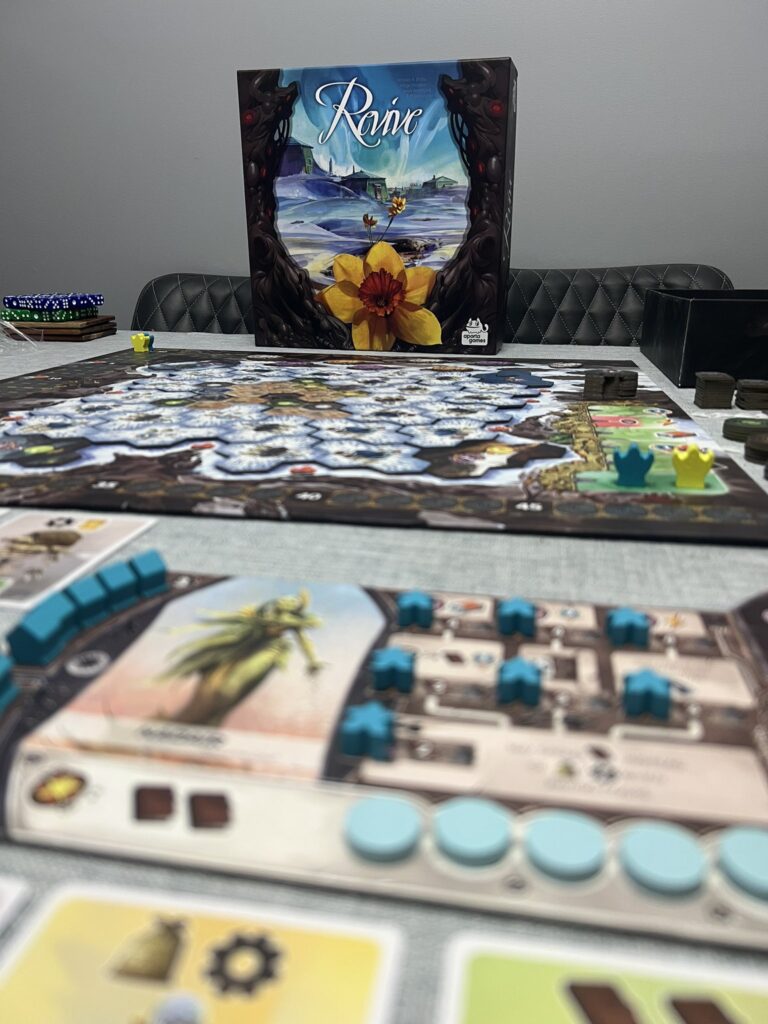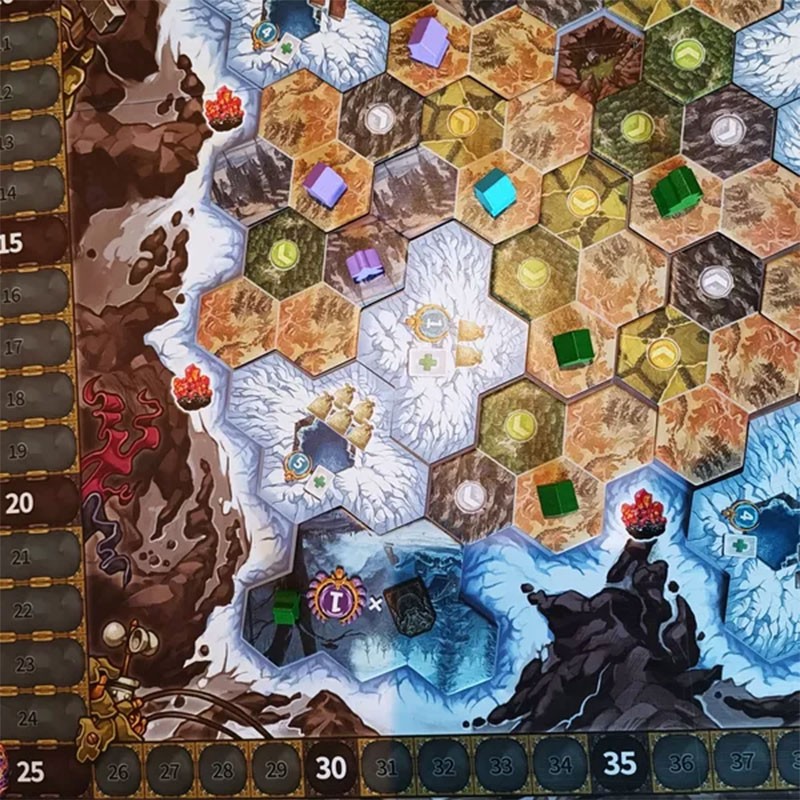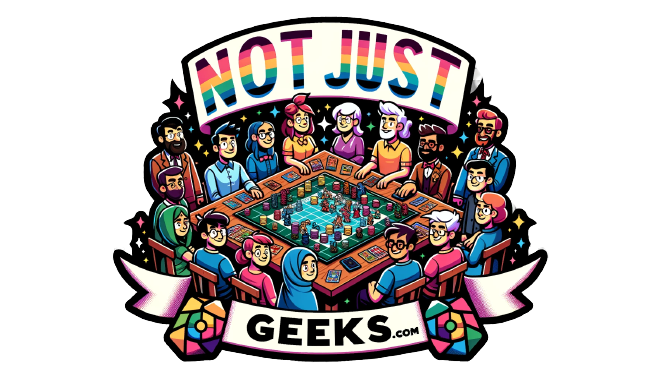It is your goal in Revive to become a survivalist in the post-apocalyptic world, and you play as one of the factions of survivors battling to renew technology while exploring the frozen planet while trying to survive. The objective is to repopulate and rebuild the world in order to earn the most points, and once the final artifact is obtained, the game will end. This game consists of a primary board that represents a planet, a player board with a dual-layered design, and a faction board with a single layer but full functionality. There are several mechanisms in Revive that make it an engaging strategy game to play. It includes standard tiles, disks, and meeples.
There is a central chasm at the center of Revive, which serves as the starting point for exploration. The Ancient Location tiles represent your faction’s Ancient Location tiles and you will earn end game points if you fill them up at the four corners of the map. There are also rewards on the score track and the Hibernation track, both of which are located on the main board, that you can find as you move forward. All of these elements contribute to the overall theme of rebuilding and repopulating a post-apocalyptic world as well as become essential features of the strategic gameplay of Revive.

There are six factions included in Revive, each of which has a basic and advanced version. The player board consists of meeples and small and large buildings representing your chosen factions. The player board has several slots for holding cards, including two above the board, one on the side, and two below. They can all be customized with modules to suit the player’s needs. Throughout the central portion of the player board, three paths are connected to each other, connecting players with a variety of technologies that the players initially don’t see until they progress through the tracks. The player board is an integral part of the game in that it keeps track of your progress and gives you an overview of the technologies you should pursue.
It is possible for all players to draft additional starter cards at the beginning of the game, and every player has an identical deck of cards. Artifact cards are also available in the game, and players can also earn major artifact cards to double the amount of points they earn in the game. The player can take two actions (the same or different) or hibernate during gameplay. The active card display, which consists of the same starting deck cards, is one of the possible actions for each player. There are simple icons at the top and the bottom of the cards, which players can use to collect resources or take other actions by following the icons. The game has depth and replay value because you have a wide range of ways to strategize and use your cards.

Revive also allows you to gather resources once per round using your switch. The switch is located on the player board and can be used once per round to collect resources. As an option, you may also choose to explore by paying the range of food you wish to explore, which is how far you wish to travel from the chasm or one of your tokens already on the board to the tile you wish to explore. As a result, you will need to pay food and possibly books to flip the tile, which will reward you with points and a new card for your collection. Alternatively, you can populate a location space on the main board by paying books to place a meeple from your faction board, which will also unlock one of your faction’s abilities if you place the meeple into the location space. Having your meeples at the ancient locations will earn you end game points. These actions all add depth and strategy to the gameplay of Revive, where you must carefully consider your resources and abilities as you move forward.
It is possible to build a small or a large building on your turn in Revive if you build next to certain terrains, you will be able to advance your markers on your machine and unlock new technologies if you have enough energy. These technologies can be used as a free action if you have enough energy. When there are no choices available or you are unable to take any actions, you can choose to hibernate instead. The Hibernation track allows you to advance on the Hibernation track, replenish your active card display, clear your card slots, reset your switch, and recycle your energy while also refilling your active card display. As you progress on the machine tracks, you’ll uncover technologies and earn points at endgame by placing the disks covering these technologies on a point track to earn points at endgame. In addition to this, there are many additional details and bonuses that can be earned when playing the game, such as advancing on the score and Hibernation tracks, which adds a level of depth and strategy to the game play.
I personally purchased Revive while at GameCon and have found it to be a great fit for my preferences in mid- to heavy-weight strategy games. When it comes to building your machine, there are a lot of options that are available to you, including the ability to choose modules, draft cards, and decide which paths to take in the process. Although it is not as large a part of the gameplay as it should be, exploration is another interesting aspect of the game that you should check out. In Revive, the factions are unique and add a great deal of flavor to the game, and I am eager to explore the advanced powers. There are many working parts to this game, but I feel that they all work well together and contribute to the overall experience of playing it. Having played Revive with two players and more, I found that it works well in both situations, the only difference being that with fewer players there are fewer exploration opportunities, which is the main difference.


